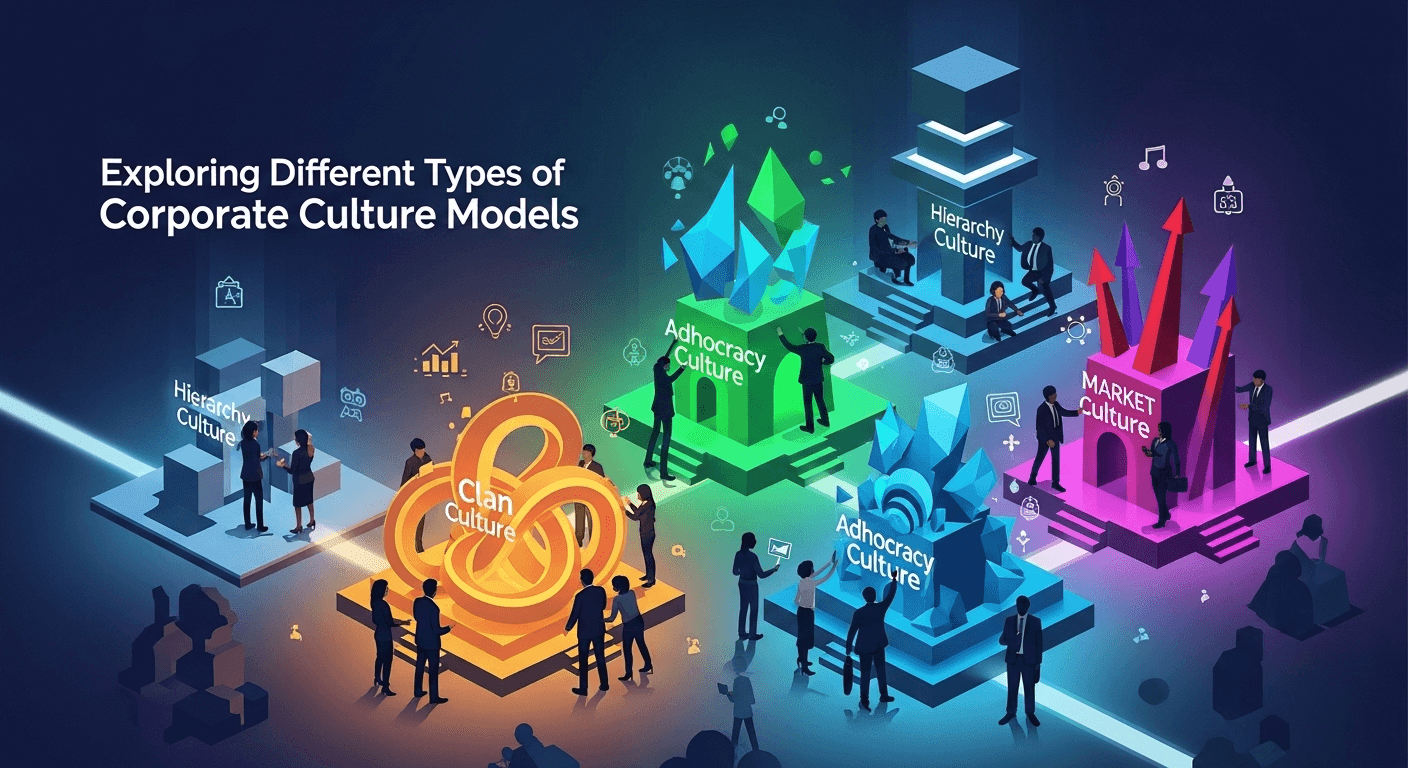Corporate culture is the invisible force that shapes an organization's employee experience, guides decision-making, and ultimately drives its success or failure. It's the collection of shared values, beliefs, attitudes, and behaviors that constitute the unique social and psychological environment of a business. As the famous management consultant Peter Drucker once said, "Culture eats strategy for breakfast." This powerful statement highlights that no matter how brilliant a company's strategy is, a misaligned or toxic culture will undermine it at every turn. Understanding the different types of corporate culture models is therefore not just an academic exercise; it's a critical leadership competency required to build a resilient, high-performing organization in the 21st century. Exploring Different Types of Corporate Culture Models A company’s culture dictates everything from how employees interact with each other to how they approach their work and respond to challenges. For leaders, HR professionals, and employees alike, being able to identify and understand the prevailing culture is the first step toward improving it. These models provide a framework for diagnosing the "as-is" state and a roadmap for building the "to-be" culture that aligns with strategic goals. By exploring these established models, organizations can gain clarity on their internal dynamics and make intentional choices about the environment they wish to foster. What is Corporate Culture and Why Does It Matter? At its core, corporate culture is the “personality” of a company. It encompasses the unwritten rules, social norms, and shared experiences that influence how people behave. This culture is visible in a company's dress code, office setup, working hours, employee benefits, hiring decisions, and treatment of customers. It’s the difference between a workplace where people feel energized and empowered versus one where they feel drained and micromanaged. A strong, positive culture doesn’t happen by accident; it is cultivated through consistent and intentional effort from leadership. The importance of corporate culture cannot be overstated. It directly impacts several key business metrics. Firstly, it is a primary driver of employee engagement and retention. A positive culture where employees feel valued and connected to the company's mission will naturally lead to higher morale and lower turnover rates, saving the company significant costs associated with recruitment and training. Secondly, a healthy culture fosters collaboration and innovation. When employees feel psychologically safe to share ideas and take calculated risks, creativity flourishes. Ultimately, corporate culture is a powerful competitive advantage. In an era where products and services can be easily replicated, a unique and compelling culture is difficult for competitors to imitate. It becomes a core part of the company's brand, attracting not only top talent but also loyal customers who resonate with the company's values. Companies like Patagonia, known for their purpose-driven culture, or Zappos, famous for its customer-centric and slightly quirky environment, have proven that a deliberate cultural strategy translates directly into long-term business success and brand equity. The Competing Values Framework: A Foundation for Understanding Culture One of the most influential and widely used tools for understanding and categorizing organizational culture is the Competing Values Framework (CVF). Developed by professors Robert Quinn and Kim Cameron at the University of Michigan, the framework emerged from research into what makes organizations effective. They discovered two key polarities that define how organizations operate and what they value. These polarities form the axes of a quadrant, creating a simple yet powerful map for different culture types. The framework is built on two primary dimensions: Internal Focus & Integration vs. External Focus & Differentiation: This axis describes whether an organization is more focused on its internal dynamics (like employee development and collaboration) or its external environment (like market competition and customer demands). Flexibility & Discretion vs. Stability & Control: This axis represents the tension between being adaptable, agile, and spontaneous versus being predictable, stable, and mechanistic. By plotting these two dimensions on a graph, Quinn and Cameron identified four distinct quadrants, each representing a core cultural model: Clan, Adhocracy, Market, and Hierarchy. No single culture is inherently "better" than another; their effectiveness depends on the organization's industry, strategy, and goals. Most organizations are a blend of these types, but usually, one is dominant. Understanding this framework provides a clear vocabulary to diagnose a company's current culture and discuss its desired future state. The Four Core Corporate Culture Models The Competing Values Framework gives us four archetypes that help classify the vast majority of organizational environments. Each model has its own leadership style, value drivers, and theories of effectiveness. Let's explore each of these in detail. The Clan Culture (Collaborate) The Clan culture is defined by its internal focus and high degree of flexibility. Think of it as a family-like environment. This type of culture is built on a foundation of collaboration, shared values, and a strong sense of community. The organization is held together by loyalty and tradition, and there is a significant emphasis on teamwork, participation, and consensus. Leaders within a Clan culture often act as mentors, facilitators, or parent figures, nurturing their employees and fostering a supportive atmosphere. Success in this environment is measured by the level of internal cohesion and employee satisfaction. The primary advantage of a Clan culture is its ability to create exceptional employee loyalty and engagement. People feel a deep sense of belonging and are motivated by a shared purpose, leading to low turnover and high morale. However, this model is not without its drawbacks. The focus on consensus can lead to slow decision-making, and the close-knit nature can sometimes foster groupthink, where dissenting opinions are discouraged. It can also struggle to adapt to rapid market changes due to its internal focus. Small startups, non-profits, and family-owned businesses often exhibit strong Clan culture characteristics. The Adhocracy Culture (Create) Positioned in the quadrant of external focus and high flexibility, the Adhocracy culture is a dynamic, entrepreneurial, and creative workplace. The root word, ad hoc, implies a temporary and adaptable nature. This culture thrives on innovation, risk-taking, and experimentation. The primary goal is to create new products, services, and solutions, pushing the boundaries of





